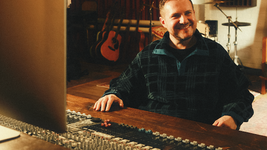'Ai Weiwei: Roots' Review - Lisson Gallery
- Julie Uszpolewicz
- Oct 13, 2019
- 4 min read
2nd October – 2nd November 2019
FREE Entry
Though it has been around in the art world forever, the contrast between civilisation and nature seems to be even more applicable now than ever. This very contrast is the core of Roots, yet Ai Weiwei seems to dedicate this work to other disparities that define our modern life. Contrasts between the obvious and implied, real and imaginary, soothing and disturbing—are all evoked as you walk through the rooms of the Lisson Gallery.
The first part of the exhibition feels very soothing and almost dream-like, but Ai Weiwei likes to show that things are very often not exactly what they seem. At first glance Lisson Gallery, struck with its light-filled space, is a well-appreciated escape from the hectic streets of London. Gentle, instrumental music was playing in the background as I walked towards the first element of the exhibition — one of the eponymous roots. Despite its name given by the artist's son, Fly's tangled shape reminded me more of a dragon. Ai Weiwei invites you provoke one's memories of walking through a forest as a child and imagining fantastical creatures in their abstract natural shapes. So, I'm conscious about not getting attached to the actual names of the sculptures. The down-to-earth root sculptures are balanced out by the bamboo and silk installations hanging from the ceiling.

Ai Weiwei, Installation View. Image courtesy of Lisson Gallery's website.
Still, it seems that the inspiration derived from natural shapes continues as the sculptures, though now more geometric, bring to mind cave drawings from pre-historic times. Looking closely you can see flying birds, clouds, and tree branches, but now an element of a non-natural world is also added. If you are familiar with artist’s previous installations you probably will be able to recognise the Fountain of Light (a tribute to Vladimir Tatlin The Monument for the Third International from 2007) or Study of Perspective (photographs depicting middle fingers in various landmarks in 2017). Though, the defining element of the hanging installations is probably the play of shadows—this, for the first time, reveals that this is not about surface level discernment. The geometric sculptures of wings cast a shadow of flying birds on the white wall behind. Wondering between the down-to-earth, darkly coloured, heavy iron sculptures and the hanging, light, elusive installations seems very oneiric, bringing out the escapist effect of art.

Ai Weiwei, Installation View. Image courtesy of Lisson Gallery's website.
However, this dreamy peacefulness is quickly disturbed — the gentle music starts to be interrupted with construction sounds. By the end of the first room you will see a four-metre reproduction of The Mueller’s Report cover page. Interestingly enough it is made of lego bricks, like every other politically-charged piece in the exhibition. This is quite characteristic of Ai Weiwei’s ironic wit. As you walk through the consequent gallery rooms the exhibition gets more to down-to-earth as the artist introduces more social commentary on contemporary events. These works touch on the Hong Kong protests and migrant crisis or simply raise questions about civil disobedience in our modern world. All this is accompanied by the iron sculptures of roots, thereby showing a contrast between the eternal (replicas of age-old trees) and transitory (short-lived political events compared to the livelihood of trees). The strongest political allusion for me, though, definitely was the “making of” the exhibition movie which raised questions about human intervention to the rainforest. Suddenly, from the initial soothing feeling, I became rather melancholic about the state of the modern world, especially with the Amazon fires still fresh in my mind. As much as I didn’t appreciate the unsettling feeling the movie left me with, I have to appreciate that great art often is about evoking such emotions.
The mixture of human-made sculptures and natural imagery in the hanging installations, the contrast between lego photographs and eponymous roots, the production of iron sculptures in the middle of the jungle—all explore the major theme in the exhibition; of the relationship between nature and civilisation. Yet, the most moving and the most interesting works for this matter, are two pairs of roots displayed in the gallery courtyards. As much as the ancient roots strikingly contrast the brutalist architecture of the area in some way they look very aesthetically pleasing: actually well accompanying their surroundings. I think that the purely aesthetic effect, which is a big part of the exhibition too, will be even more emphasised if you visit Lisson Gallery on an especially gloomy day (which shouldn’t be so hard in London) since the greyish colours of the sky seem to fit.

Ai Weiwei, Installation View. Image courtesy of Lisson Gallery's website.
It's difficult to describe the effect Ai Weiwei's show has on you, simply because of the transition from peaceful to disturbed. It will make you feel encouraged and it will make you disillusioned about the contemporary political issues, but not in the obvious, literal way that some provocative artists do. The artwork, even when commenting on serious issues, are very subtle in doing so; therefore encouraging even more reflection, which I think is what art should be about.
Edited by Charlee Kieser, Deputy Digital Editor





















































Opmerkingen